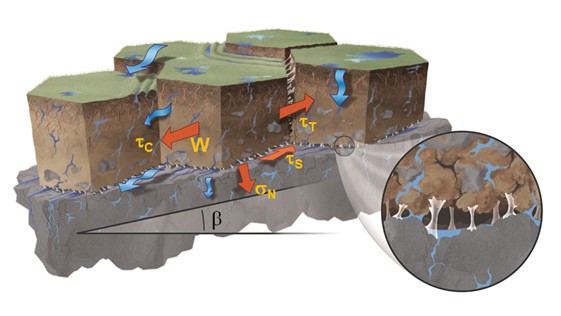Modeling philosophy
Basic principles – What is different in STEP-TRAMM
Rainfall-induced shallow landslides may occur abruptly without distinct precursors and could span a wide range of soil mass released during a triggering event. We developed a landslide triggering model for rainfall induced shallow landslides STEP-TRAMM. The landslide triggering model couples the Fiber Bundle Model (FBM) formalism with threshold mechanics of interconnected soil columns, allowing representation of progressive local failure culminating to abrupt mass release. The soil mantle overlaying the bedrock is discretized into an assembly of mechanically interconnected hexagonal soil columns. The dynamics of soil water content is obtained from a detailed hydrology module that considers rainfall infiltration, surface runoff, matrix flow and fast water flow along the soil-bedrock interface. Mechanical connections between soil and bedrock and among adjacent soil columns are represented by virtual mechanical “bonds” represented by a bundle of mechanical fiber elements (FBM) mimicking the mechanical behavior of various soil elements (e.g., friction, cementing agents, capillary bridges, roots). The progression of small ‘benign’ failures within mechanical bonds may initiate a chain reaction of subsequent failures, culminating in local mass release. This model provides a means for simulating the dynamics of locally resolved landslide failure pattern at catchment scale. The model has been applied for hydromechanical modeling of failure patterns for rainfall events at spatial and temporal resolutions of 2.0 m and 1 min, respectively.

